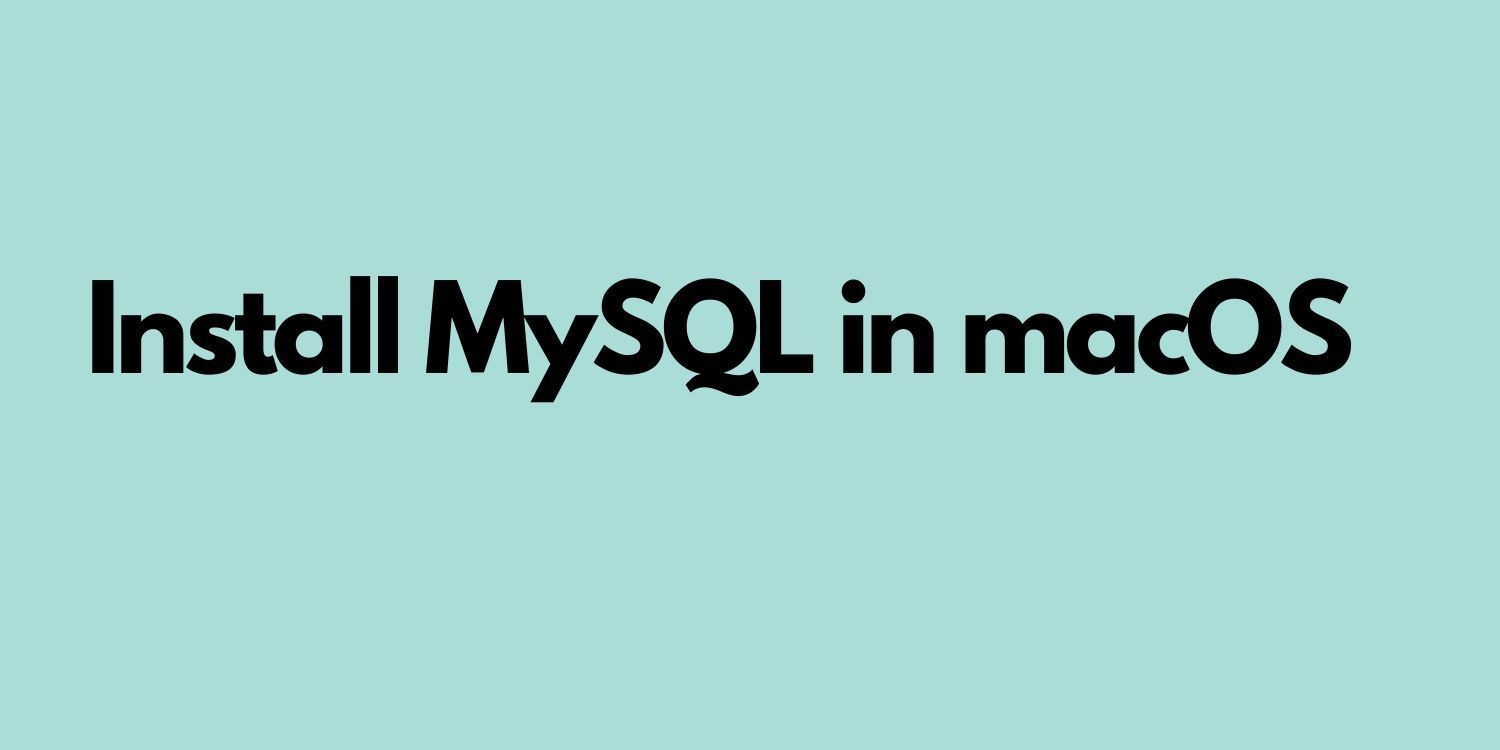

- #HOW TO RUN AND INSTALL MYSQL ON MAC MANUAL#
- #HOW TO RUN AND INSTALL MYSQL ON MAC SOFTWARE#
- #HOW TO RUN AND INSTALL MYSQL ON MAC MAC#
What’s the point of starting it with a privileged account? I’m just using it for testing local repo changes. “You have successfully installed Apache web server via Homebrew, and configured it to auto-start with a privileged account.” You say that running the command will “configure httpd service to be auto-started on system boot”, but brew says it’ll do the exact opposite. => Successfully started `httpd` (label: ) Warning: httpd must be run as non-root to start at user login!
#HOW TO RUN AND INSTALL MYSQL ON MAC MANUAL#
This will require manual removal of these paths using `sudo rm` on Warning: Taking root:admin ownership of some httpd paths: Why do you run `sudo brew services start httpd`? That changes ownership on /usr files: The below command is used to stop, start, and restart Apache service sudo apachectl stop

You now have installed Apache server, also configured it accordingly to your setup. Now, Point your browser to This should display your newly created index.html. Restart apache to ensure your configuration changes have taken effect: sudo apachectl -k restart Let’s create a Sites folder in your home directory and create a sample index.html file for the testing. You will face issue for the permissions because, by default, Apache runs as the user daemon and group daemon (Maybe username and group are to _User user_name LoadModule rewrite_module lib/httpd/modules/mod_rewrite.soĪs you have configured the Apache document root to your home directory. # AllowOverride FileInfo AuthConfig LimitĪlso, you should enable the mod_rewrite module by removing leading # symbol from the following line. # It can be "All", "None", or any combination of the keywords: # AllowOverride controls what directives may be placed in. In that same block you will find an AllowOverride option, Set this to all to enable the uses of the.

This should also be changed to point to your new document root as well: You also need to change the tag configured just right below the DocumentRoot line. The default document root is set to “/usr/local/var/But I assume you want to change the document root to set to your home directory.Ĭhange this to point to your user directory where your_user is the name of your user account: DocumentRoot /Users/rahul/Sites

Now, configure the document root for Apache. You have to manually change the listen port from the default of 8080 to standard port 80. The Homebrew’s version of httpd uses port 8080. A configuration file /usr/local/etc/httpd/nf is generated by the installer which you need to edit in a text editor and make following changes. Now you will want to make some configuration changes according to your local development environment. The Apache web server is running now on your macOS system. You can try to reach your server in a browser by pointing it at you should see a simple header that says “It works!” Step 2 – Configure Apache You have successfully installed Apache web server via Homebrew, and configured it to auto-start with a privileged account. Now install the new version Apache server provided by Homebrew: brew install httpdĪfter completing the installation process, configure httpd service to be auto-started on system boot. Sudo launchctl unload -w /System/Library/LaunchDaemons/ Open a terminal and execute commands to stop running Apache server and remove it. Remove built-in Apache server (if any) from your system.
#HOW TO RUN AND INSTALL MYSQL ON MAC SOFTWARE#
It is useful for installing most open source software like Node.
#HOW TO RUN AND INSTALL MYSQL ON MAC MAC#


 0 kommentar(er)
0 kommentar(er)
